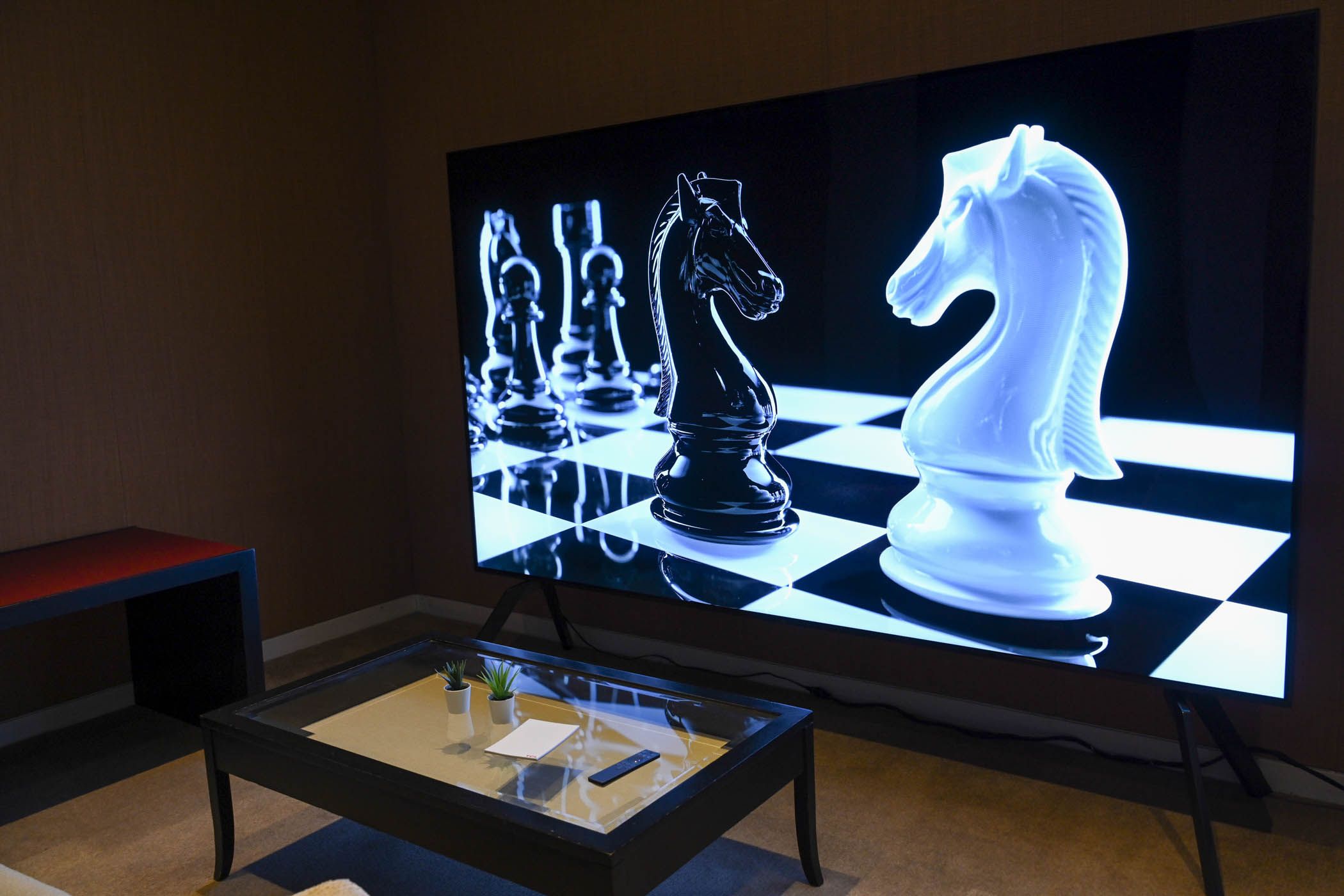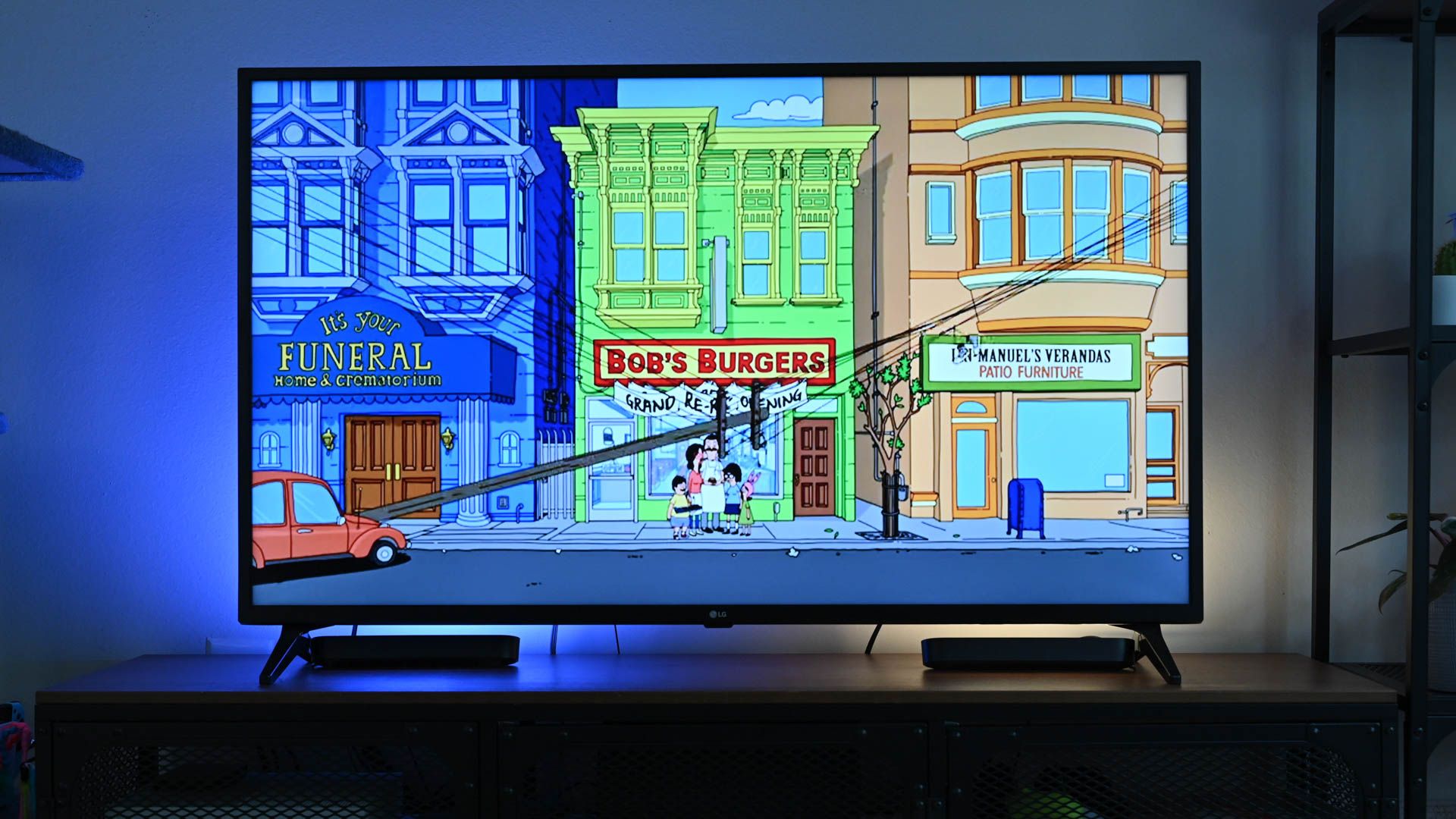
Achieve Crystal Clear Visuals on Screen Without Splurging: 7 Simple Steps to Optimize Your TV's Picture

Achieve Crystal Clear Visuals on Screen Without Splurging: 7 Simple Steps to Optimize Your TV’s Picture
Quick Links
- Choose the Right Picture Mode
- Adjust Brightness and Backlight Settings
- Turn Off Unnecessary Processing
- Disable Power-Saving Modes
- Control Ambient Lighting
- Add Bias Lighting
- Consider Your Viewing Distance
Key Takeaways
- Selecting the right picture preset can greatly improve your TV’s picture quality.
- You can also adjust brightness and backlight settings for optimal black levels and brightness.
- Turning off unnecessary processing and power-saving modes is another way to improve your viewing experience.
Are you unhappy with the picture quality of your TV? You don’t necessarily need to rush to buy a new one. You can expect significant improvements with a few tweaks to your TV’s picture settings and viewing environment.
Choose the Right Picture Mode
Modern TVs have several picture modes , from Standard, to Vivid, to Sports. However, not all picture modes are ideal for home use or delivering an accurate image. For example, Vivid mode may look colorful and seem like it improves the picture quality at first glance. However, it over-saturates color and creates an unnatural and unrealistic picture. It can also lead to loss of detail and result in eye fatigue over long viewing sessions because the Vivid mode overemphasizes sharpness and boosts brightness .
Similarly, Sports mode produces unnatural colors as it increases color saturation in an effort to make everything look more vibrant and visually appealing. These exaggerated colors aren’t an accurate description of what’s happening on the field. Moreover, while it’s helpful for watching fast-motion sports because of motion smoothing, the same feature makes it less than perfect for watching anything else. Some people don’t even like using it to watch sports.
Movie or Cinema mode typically delivers the most balanced and natural picture of all available picture modes. It doesn’t unnecessarily enhance anything to make it more vibrant and provides an accurate representation. But if you prefer to watch movies as the creator intended them to be viewed, you can choose the Filmmaker Mode if it is present on your TV.
Additionally, if you own an OLED TV and find the picture dimmer while watching Dolby Vision content, switching to Dolby Vision Cinema Home (also called Dolby Vision Bright) mode from Dolby Vision Cinema (also called Dolby Vision Dark) mode is better. The former may not be super accurate, but it’s better for home use as homes don’t typically have controlled ambient lighting, and you may miss some shadow details in Dolby Vision Cinema.
Adjust Brightness and Backlight Settings

Hannah Stryker / How-To Geek
Brightness and backlight settings are vital for getting the proper black levels and overall brightness of your TV’s picture. The brightness option on your TV actually tweaks the black levels on your TV. So, if the brightness is too low, you may miss some shadow details. But if it’s too bright, you’ll get a washed-out picture. Colors will also lose their vibrancy and look faded.
On the other hand, the backlight option changes the overall brightness of the picture on modern TVs. So it’s the right setting to tweak when you want a higher backlight for a brighter room to overcome glare and make everything on the screen properly visible. However, a lower backlight is better for a darker ambiance as it will produce deeper blacks, resulting in better contrast. It will also make watching TV more comfortable. However, if you go too low, you’ll make the whole picture too dim. Getting the right balance will take a bit of trial and error, depending on the ambient lighting.
Turn Off Unnecessary Processing
Apart from the general settings, you’ll find a ton of processing options on TVs. All claim to boost your picture quality, but the result isn’t always great. As different TVs have different options, there is no simple answer. The impact of different processing options can also depend on your TV manufacturer. So, a good starting point is to turn off all extra processing and play around with each option to find what works best for you. Noise reduction features are particularly unnecessary if you primarily watch HD or 4K content. Motion smoothing is also typically a big no-no if you prefer the creator’s intent and want to avoid unnecessary artifacts.
Disable Power-Saving Modes
TV manufacturers include power-saving or “eco” modes to make televisions more energy-efficient by reducing power consumption. While this is great for the environment and your electricity bill, it significantly affects your TV’s picture quality. The dimmed backlight reduces brightness, which also affects contrast and HDR performance. All this makes the picture dull. So, to get the best out of your television, you should disable eco mode.
Control Ambient Lighting
Besides tweaking your TV’s picture settings and modes, you can also improve your overall TV viewing experience by controlling the ambient light. It’s a good idea to dim the lights and get as close to the dark as you can get if your TV doesn’t get very bright, which is something you’ll face with older OLED TVs and budget LED TVs. In a darker room, the contrast is more noticeable, which, in turn, makes colors pop.
But whether your TV gets really bright or not, you’ll want to check unwanted light sources. While brighter TVs can mitigate unwanted reflections, it’s better to prevent them from coming from (for example) a window or a lamp. You can achieve this by adding blinds to block the light from a window or moving the lamp away from the TV.
While too much ambient light is a problem, getting too dark can also be, particularly for your eyes. An excellent way to avoid this is adding bias lighting.
Add Bias Lighting

Hannah Stryker / How-To Geek
Bias lighting is simply a dim light placed behind a television. It adds a small amount of indirect light to the environment and can significantly enhance your viewing experience.
Bias lighting can do wonders for your viewing experience . It enhances your contrast perception, making blacks appear deeper and colors more vibrant. This is especially beneficial in dark viewing environments, reducing eye strain and providing a more immersive viewing experience.
Consider Your Viewing Distance
Your TV viewing distance is a crucial part of your viewing experience. While it doesn’t directly impact your TV’s picture quality, it can affect the overall experience. By sitting at an optimal distance, you can appreciate the full detail and resolution of the display. If you are too close, you can feel overwhelmed and uncomfortable, while you’ll miss out on finer details sitting too far.
The ideal TV viewing distance depends on your TV’s screen size . There are several different schools of thought about this. For example, Panasonic and Sony say the ideal distance for watching a 4K TV is 1.5 times the vertical size of the screen. However, the Society of Motion Picture and Television Engineers (SMPTE) and THX recommend sitting slightly farther from screens. But their recommendations were issued for cinemas and don’t really account for the higher resolution of modern TVs.
Also read:
- [New] 2024 Approved Mastering Screen Shots on Windows Machines
- 2024 Approved Vimeo's No-Money Solution Easy Editing Basics
- Comprehensive Guide to 3GP Files: Exploring the Third Generation Partnership Project Video Format for DVD Playback on Windows
- Elite Performance Meets Luxury Design: Comprehensive Review of the Gigabyte AORUS FO32U2P OLED Monitor for Gamers
- Experience Gaming Excellence: Acquire the Stunning Acer Nitro, 27-Inch, at an Unbeatable $149!
- Experience Next-Level Display: The New Low-Latency, High-Resolution 120N Modos Paper Monitor Unveiled - All in Open Source
- Experience Next-Level Gaming: Review of AOC Agon Pro AG456UCZD, the 45 Ultra-Wide OLED Monitor Featuring Extreme Curve Tech and High-Speed Action!
- Exploring Advanced Gadgets with Tom’s Electronic Review
- How Often Can Creators Expect to Be Paid by YouTube?
- In 2024, Phantom Footprints Videography Review
- In 2024, Why Your WhatsApp Live Location is Not Updating and How to Fix on your ZTE Blade A73 5G | Dr.fone
- Solving Discord Volume Problems - How to Hear Clearly Again
- Title: Achieve Crystal Clear Visuals on Screen Without Splurging: 7 Simple Steps to Optimize Your TV's Picture
- Author: Joseph
- Created at : 2024-10-16 16:15:44
- Updated at : 2024-10-18 20:45:29
- Link: https://hardware-help.techidaily.com/achieve-crystal-clear-visuals-on-screen-without-splurging-7-simple-steps-to-optimize-your-tvs-picture/
- License: This work is licensed under CC BY-NC-SA 4.0.